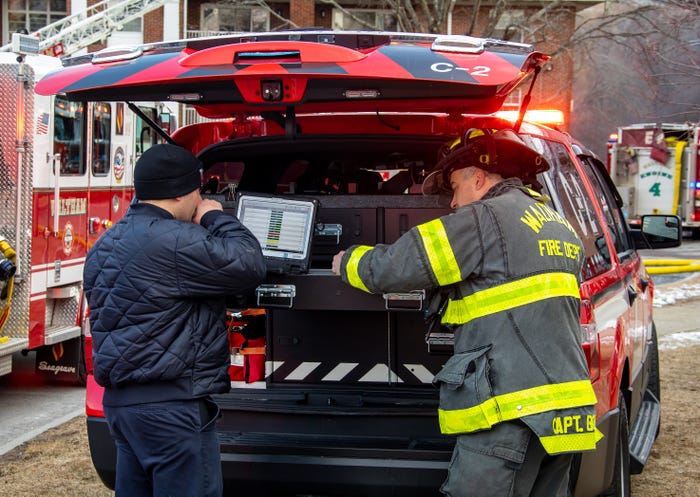Motorola announces multiband P25 radioMotorola announces multiband P25 radio
Motorola today unveiled the APX 7000, a full-featured multiband portable P25 radio with integrated voice and data that comes in a hardened package and is designed to be user-friendly for public-safety users, according to company officials.
August 4, 2008
KANSAS CITY—Motorola today unveiled the APX 7000, a full-featured multiband portable P25 radio with integrated voice and data that comes in a hardened package and is designed to be user-friendly for public-safety users, according to company officials.
“When we spoke with customers some time ago, they asked us for three things: make it louder, make it easier to use and make it smaller,” Tom Quirke, senior director of global products and solutions for Motorola’s government and public-safety business, said during an interview with Urgent Communications. “We’ve put a check in the box for all of those, but we’ve added a lot more capability.”
Indeed, the APX 7000 represents Motorola’s first portable multiband offering. The radio’s ability to operate in 700 MHz, 800 MHz and VHF networks will give first responders a new level of interoperability, Quirke said.
“There are network ways to linking different organizations—we’ve got MotoBridge, for instance—and customers tell us they’re great,” Quirke said. “But, in some cases, it takes 10 to 15 minutes to set that bridge up, and the customers say, ‘That’s 10 to 15 minutes I don’t have. I like the control of having the radio perform an automatic scan or me turn a knob to connect to the people I need to speak to.’”
In addition to operating on different bands, the versatile APX 7000—as well as the APX 7500 mobile version also being announced this week—is P25 Phase 1-compliant and will be upgradeable to P25 Phase 2, he said. The radio also is backward compatible with Motorola’s SmartNet and SmartZone systems, making it an ideal choice for agencies with such networks that are seeking a smooth migration path to P25, Quirke said.
Using a P25 Phase 2-compliant, A&B half-rate vocoder capable of operating on 6.25 KHz channels and designed to suppress background noise, the APX 7000 provides 50% louder audio than Motorola’s XTS 5000 series with no distortion, Quirke said. This is possible because the two-sided radio—one geared for voice while the other geared for data—means there are two microphones and two speakers in the unit, providing greater audio sensitivity and clarity, he said.
The radio also is better suited for data applications, with color displays on the front and the top that feature intelligent lighting—for instance, the screen turns orange in a “man down” situation. Data capabilities are enhanced by a memory card slot, as well as another expansion slot that can be used to provide connectivity via different air interfaces, Quirke said. Although the first expansion option to be provided is expected to be a Bluetooth card, the slot “lets us deal with the unforeseeable” in the rapidly-changing world of technological connectivity, he said.
Even with all of these technological features, the APX 7000 has been designed to be user-friendly after years of research by Motorola teams watching first responders use their radios in the field, said Bruce Claxton, senior director of design integration for Motorola’s public-safety business.
“What’s happening here is that the product features should be allowed to continue to become more elaborate and complex, as we need it—with more data and so on—but the use of the product needs to become simpler and needs to become second nature,” Claxton said. “So, when you reach down for a control, it’s in just the right spot.”
But first-responder customers also told Motorola representatives that they wanted a smaller, lighter radio, as well as one that could be used while wearing gloves, Claxton said. While these requests might seem contradictory at first glance, the APX 7000 is 15% lighter than the XTS 5000 and is the “most gloveable” portable-radio product in the company’s history, thanks to a T-shaped design that allows plenty of space between knobs on the top of the radio and large buttons, he said.
The new radio also is ruggedized to new levels, Quirke said. The unit can withstand two hours of being submerged, even if the hard outer shell is compromised, he said.
“In addition, if the plastic housing of the radio were to be split, broken or smashed in any way, the underneath skin of [the radio] is actually watertight, as well,” Quirke said.
The APX 7000 is scheduled to be generally available during the second quarter of 2009.



